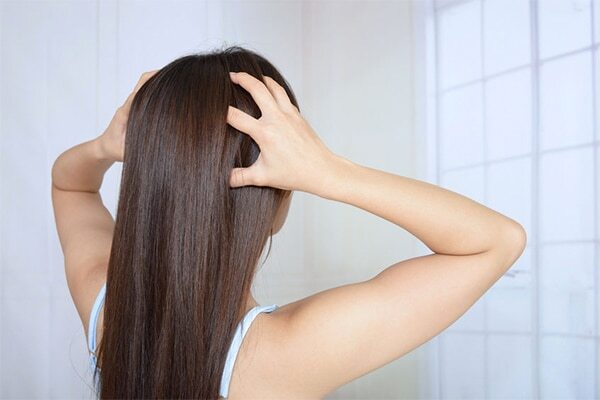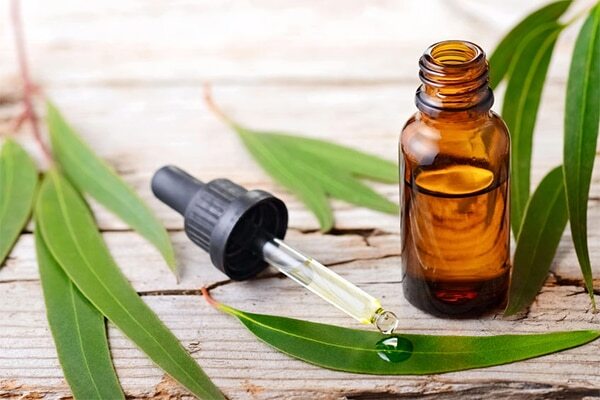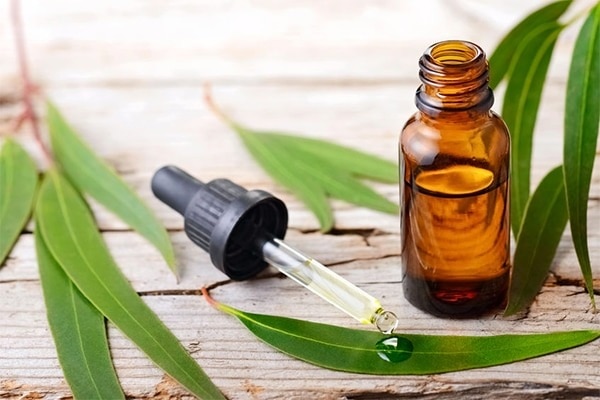It is quite common, and normal, to lose about 80 to 100 strands of hair every day. As long as your scalp is replacing the fallen strands with hair of similar thickness, texture and strength, there should not be any cause for concern. However, that is not always the case, and when your scalp fails to replace lost hair at the same rate, you notice a drop in hair volume. To be precise, reduced hair volume is the result of the increased sensitivity of your follicles to normal levels of androgens. As a result of which, your hair follicles shrink and produce new hair which is lesser in diameter and length. Simply put, you are not actually losing hair but the new hair is just not able to fill out the old space. Fortunately, while there are many routes of treatment available to boost hair volume, Ayurveda has a set of established principles to do the same.
01Regular head massages

Regular scalp massages help increase blood circulation and nourish hair follicles to boost healthy hair growth and volume. Here is how to do a hair massage the right way:
- Heat up some hair oil so that it is lukewarm to the touch, this will help in better absorption of the oil into your scalp.
- Separate your hair into sections and apply the oil. Use your fingertips to massage the roots and make sure to apply the oil to the ends as well. Do this for 15 minutes while applying gentle pressure.
- Leave the oil on for two hours and then wash with a gentle shampoo. You can also leave the oil overnight and wash the next morning.
02Include essential oils in your hair care routine

Essential oils can be very beneficial when incorporated in your hair care routine. Some essential oils that can help with increasing hair volume are:
- Infused with an anti-inflammatory compound called carnosol, rosemary essential oil has been known to show results in controlling hair loss caused due to hormonal imbalances.
- Lavender essential oil is rich in compounds like linalyl acetate and linalool, both of which can stimulate and deeply nourish your hair follicles. This essential oil is also known to add strength to your roots by thickening the thermal layer, resulting in a denser mane.
- Infused with antioxidant and astringent properties, juniper essential oil can help maintain a clean and healthy scalp. It is known to block acne-causing bacteria on the scalp and has antiseptic properties to keep scalp infections at bay. It is important to note that essential oils should never be directly applied to the scalp. Always use a base oil, like castor or coconut oil, to dilute the essential oils. Mix a few drops of your chosen essential oil into a base oil and massage all over your scalp. Keep it on for about two hours and then wash with a sulphate-free shampoo. Also, always do a patch test before using essential oils on your hair to make sure you are not overly sensitive to them.
03Deep condition with an amla hair mask

According to Ayurveda, 'Pitta Dosha' can cause the release of excessive heat from your hair follicles, thus impacting the health of your hair. Amla or Amalaki (Indian gooseberry) helps neutralize this heat on your scalp, adds luster to your hair and improves the hair growth cycle. All you need is amla powder and yoghurt/water to make a nourishing hair mask; and here's how to do it: Step 01: In a non-metallic bowl, blend the amla powder and yoghurt/water into a smooth paste. Step 02: Separate your hair into sections and apply the paste all over your hair and scalp. Start close to your roots and take the mask down till the ends. **Step 03: **Cover your head with a shower cap to prevent the mask from dripping or drying out too soon. Leave it on like that for 30 minutes, keep checking to see if it is damp enough. Step 04: Once the 30 minutes are up, wash your hair with lukewarm water and a mild, sulphate-free shampoo.
04Incorporate herbs into your hair care routine

Ayurvedic herbs have long been used in hair care for the effective results and the gentle care they provide to the scalp. The herbs, which are also medicinal in nature, can be included in your hair care routine in multiple ways, some of which have been listed below:
Bhringraj:
An Ayurvedic staple you might already be familiar with, Bhringraj helps soothe your scalp and boost hair volume from within. Hair oils infused with this wonder-herb are easily available or can be prepared at home. For at-home preparations, first dry Bhringraj leaves and crush them into a fine powder. Heat coconut oil with this powder seeped in it and store in a bottle for regular use. Massage your scalp thrice a week with the oil and leave it on for 30 minutes, wash with a mild shampoo for best results.
Fenugreek:
Fenugreek seeds (methi) have long been used in both beauty and health solutions in Ayurveda. They are rich in vitamin C, vitamin K, vitamin A, iron, calcium, potassium and folic acid. In addition to this, the high nicotinic and protein content of methi seeds make them an excellent scalp treatment to fight against dandruff-induced hair thinning. They also hydrate your scalp to keep dryness at bay. DIY this easy fenugreek seeds hair spray to use on your mane whenever you like!
Triphala:
Infused with a powerful active compound called haritaki, Triphala is a strong anti-bacterial, antifungal and anti-dandruff herb to add to your hair care routine. Used in a powdered form, similar to Bhringraj, Triphala can help maintain ideal scalp health and help boost hair volume. Use Triphala-infused hair oils thrice a week with the application done an hour before shampooing your hair.
Brahmi:
Brahmi hair oils can treat a variety of scalp and hair issues, including dryness, itchiness and split ends. They are also known for reducing stress-induced hair loss by providing calming benefits to your mind. Just make sure to squeeze in a proper champi with Brahmi-infused hair oil at the end of a busy day!
05A balanced diet to boost hair volume

Ayurveda believes that a balanced diet is a key to good skin and hair. Especially for hair, a protein-rich diet helps provide the keratin content necessary to maintain luscious hair. Also, nutrients like antioxidants, amino acids, biotin, folic acid, vitamin C, vitamin E, vitamin A, vitamin D, selenium, niacin, iron, zinc and fatty acids are required for hair health. While you can always include supplements in your eating habits to get these nutrients, food sources are a more wholesome way to enriching your diet. Consume a balanced diet of animal products, green leafy vegetables, citrus fruits, nuts, whole grains, carrots and even probiotics like yoghurt should be part of your daily meals in one way or the other.
06FAQs about hair volume

Q. How to DIY homemade reetha hair cleanser?
**A. **Reetha (soapnuts), are yet another effective Ayurvedic ingredient and can be helpful to improve your scalp health. They are rich in the compound saponin, which is known to make your tresses healthy. Reetha-infused hair cleansers are, therefore, very popular. They can be made at home by boiling soapnuts in water and letting it steep overnight. The next morning, just strain the water and use the residue as an eco-friendly hair cleanser or a **hair rinse post shampooing. **
Q. Can aloe vera boost hair thickness?
**A. **Much like your skin, aloe vera can have multiple benefits for your hair as well. Use natural aloe vera gel as a deep conditioning mask to ward off issues like scalp rashes, itchiness and redness. Aloe also deeply hydrates your scalp to boost healthier and thicker hair growth.
Q. Is it okay to massage your head every day?
**A. **The benefits of daily head massages depend largely on whether you plan to wash your hair afterwards or not. Since shampooing daily can strip your scalp of natural oils and hydration, massaging daily with hair oil is not recommended. However, you can massage your scalp with your fingertips or a paddle brush, but make sure to be gentle with the pressure applied.





